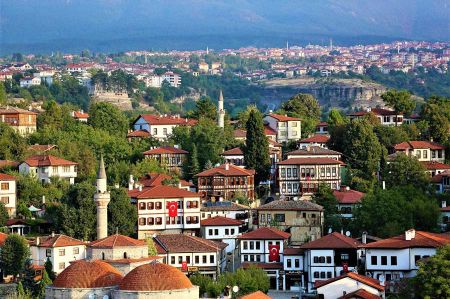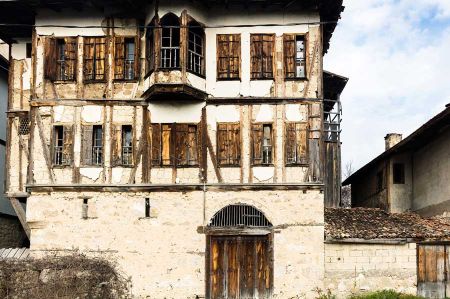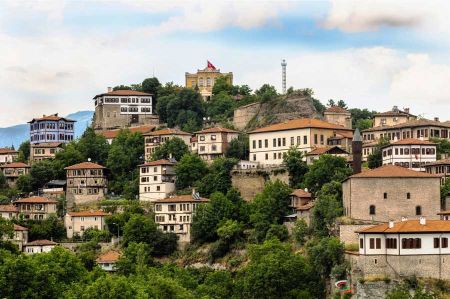One of the highlights of Black Sea Coast tour - Safranbolu
- Written by Portal Editor
Coming from Bolu, we approached at the Safranbolu World Heritage Site, which was formerly titled Dadybra or Zalifra.
Interestingly, one of the region's main products, saffron, is said not to have given its name, although this would be obvious. There are various hypotheses about the name Safranbolu. The author Nişanyan gives the former name as Theodoroupolis and thus names a place from the time of the Eastern Roman Empire. This would have resulted in Sadrabolu and then Safranbolu. Bilge Umar believes that Dadybra was the original form. In adaptation to the Turkish way of speaking, it became Zalifre first, and later Zağfiran Borlu. In any case, it is certain that the name has nothing to do with saffron.
However, today Safranbolu is a small town in northern central Anatolia in Turkey and the capital of a district in the province of Karabük, which is located about 10 km north of the city of Karabük. Because of its cityscape determined by half-timbered houses, Safranbolu has been on the UNESCO World Heritage List since 1994.
Safranbolu - Development as trading town on Silk Road

This oldest part of the city was originally a stage on one of the branches of the so-called Silk Road. For 700 years, Safranbolu was an important base for the east-west trade caravans. This function is still attested to today by the powerful building of the caravanserai in the middle, which is called "Cinci Han". Narrow windows and embrasures mark their fortress-like character. Inside there is a large courtyard with two floors of arcades with a fountain in the middle. Today the building houses a boutique hotel, the guest rooms of which were once used by merchants to accommodate and store their goods. The pack animals stood on the ground floor in a large hall. The manager of the caravanserai had an apartment in the tower towering above the only gate.
Greek residents are resettled - new structures

In the immediate vicinity of the old town is the artisan district with the bazaar, where today there are modern shops that sell souvenirs as well as saffron and other medicinal herbs. Individual craftsmen belonging to the traditional blacksmith guild also work here. Forging iron is a traditional source of income in the Karabük province. Horseshoes, iron nails, grids and other metal objects are forged in the old workshops.
Attractions in the surrounding area
In the surrounding area you can visit the natural cave Bulak Mağarasi, the public part of which can be visited is around 400 meters long, while the total length is just over six kilometres. The cave extends over three levels, the middle of which is flowed through by a stream that forms a waterfall of about 15 meters in height.
In the wider area of the city, the famous saffron crocuses are grown, today especially at Davutobasi, a village located 20 km from Safranbolu. A delicacy of saffron bolus is "Lokum", a candy based on syrup.
Some people call Safranbolu the "Rothenburg of Turkey" because of its similarity to this well known German town. If you are interested, there is a book available called "The Museum Safranbolu" which can be used as a guide when visiting the town.
Please read as well:
Saffron - precious flower and spice of love
Rottweil colourful - a city also relies on guild signs
-
-
-
https://www.alaturka.info/en/turkey-country/black-sea-region/1721-safranbolu-on-the-list-of-world-heritage-sites/amp#sigProIdd2d33a97c6
